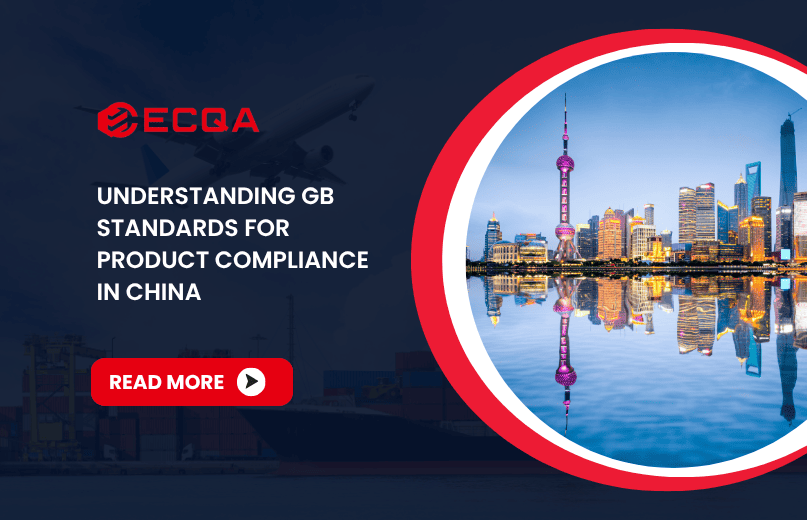
Understanding GB Standards for Product Compliance in China

GB standards, short for Guobiao Standards, are the national standards of the People’s Republic of China. These standards serve as the technical and regulatory foundation for product safety, quality, and compliance across various industries. They are developed and maintained by the Standardization Administration of China (SAC), which operates under the authority of the State Administration for Market Regulation (SAMR).
There are two main types of GB standards:
- Mandatory GB standards (GB): These have legal force and must be followed for products to be legally manufactured, sold, or imported in China. Non-compliance may result in rejection at customs, fines, or product recalls.
- Recommended GB standards (GB/T): These are technical guidelines that provide best practices or reference methods. While not legally required, they often become de facto requirements in bidding, procurement, and product qualification processes.
Unlike ISO, EN, or ASTM standards, GB standards are localized to the Chinese regulatory system. They may align with international frameworks in structure or intent but are specifically tailored to China’s domestic requirements, language, and enforcement protocols.
GB standards play a central role in product compliance in China. They inform testing procedures, certification criteria, labeling rules, and customs regulations. Manufacturers, importers, and exporters must understand which GB standards apply to their products and ensure full adherence before market entry.
Why GB Standards Matter for Importers and Manufacturers
For any company looking to sell or manufacture products in China, compliance with GB standards is a legal obligation. These standards define the essential safety, performance, and labeling criteria that products must meet to pass customs, secure certifications, and reach end-users legally.
One of the most common intersections between GB standards and regulatory enforcement is through CCC certification (China Compulsory Certification). Many products regulated under GB standards must undergo CCC-type testing, which includes conformity assessment based on relevant GB criteria.
At the border, Chinese customs officials check GB compliance through documentation reviews, labeling inspections, and, in some cases, physical testing. Failure to meet GB requirements may lead to:
- Customs detention or rejection
- Financial penalties or seizure of goods
- Delays in product launch
- Increased scrutiny on future shipments
Certain industries face more intensive enforcement due to safety sensitivity or consumer protection concerns. These include:
- Electronics and appliances (e.g., powerbank, mobile phones, kitchen equipment)
- Children’s products and toys
- Textiles and apparel
- Automotive components
- Medical devices and diagnostic tools
For foreign brands, failure to recognize and adhere to GB standards can disrupt supply chains, damage brand credibility, and lead to long-term regulatory complications.
Navigating GB Compliance: Testing, Certification, and Marking
Meeting GB standards involves more than understanding technical documents. It requires proper product testing, verified certification, and correct labeling based on Chinese regulatory expectations.
The backbone of GB compliance testing is the use of CNAS-accredited laboratories. These labs are officially recognized by the China National Accreditation Service for Conformity Assessment and are authorized to conduct tests aligned with specific GB codes.
Steps to ensure test report validity:
- Work only with labs accredited by CNAS.
- Confirm that the lab is authorized to test your product category.
- Ensure the test report clearly references the correct GB standard code.
- Retain all reports, raw data, and certificates for customs and buyer audits.
When GB standards apply to products covered by the CCC system, testing is required as part of the CCC application process. The CCC mark, affixed to compliant products, indicates they have passed testing and certification under Chinese law.
Documentation required for import clearance typically includes:
- Valid GB-compliant test reports
- CCC certificates (if applicable)
- Technical specifications in Chinese
- Product labels with Chinese instructions and safety warnings
Suppliers and OEM factories play a crucial role in ensuring that:
- All raw materials and components meet GB thresholds.
- Labeling matches the product type and certification scope.
- Testing is carried out prior to production or shipment.
Key Differences Between GB Standards and International Standards
One of the most common misconceptions is that products already compliant with ISO, EN, or ASTM standards automatically meet GB requirements. This is not the case.
Although GB standards often mirror the structure or testing philosophy of international frameworks, they feature critical differences in:
- Terminology and language (all GB standards are written in Chinese)
- Test methods (e.g., specific pH levels, voltage thresholds, or aging protocols)
- Measurement units and tolerances
- Pass/fail criteria
Foreign manufacturers must localize their approach to compliance. This includes:
- Translating documentation into Simplified Chinese
- Conducting tests in CNAS-accredited Chinese labs
- Preparing Chinese labeling in accordance with product-specific GB standards
It’s also essential to not rely solely on EU or US test reports. Chinese authorities require proof of compliance based on GB-standard testing, even if the product has already passed international benchmarks.
Key Sectors Regulated Under China’s GB Standards
Certain sectors are more tightly regulated under GB standards due to their direct impact on consumer health, safety, or national standards enforcement. Key regulated industries include:
1. Consumer Electronics
Appliances, mobile devices, power supplies, and lighting equipment must meet strict safety and EMC criteria under GB codes such as GB 4706, GB 17625, and GB/T 2423.
2. Children’s Products
Toys and baby products fall under GB 6675, which governs mechanical hazards, chemical safety, and labeling. Additional testing for small parts and phthalates is often required.
3. Textiles and Apparel
Clothing, bedding, and accessories must comply with GB 18401, focusing on formaldehyde content, colorfastness, and pH levels. Labels must include fiber content and washing instructions in Chinese.
4. Batteries and Power Supplies
Lithium-ion batteries and power adapters are covered under GB standards addressing fire risk, explosion resistance, and electrical safety. These products are also typically CCC-certified.
5. Kitchenware and Cookware
Food-contact materials such as plastics, ceramics, and stainless steel must comply with the GB 4806 series. Migration limits, material composition, and hygiene requirements are strictly monitored.
When sourcing or manufacturing in these sectors, early compliance planning is critical. Engage your suppliers and quality partners to align production, testing, and documentation with the applicable GB standard.
Verify your products meet the required GB standards before entering the Chinese market. Work with qualified testing labs and third-party inspection experts who understand local compliance frameworks.
Partner with ECQA to manage pre-shipment testing, documentation, and factory coordination in full alignment with Chinese regulatory expectations.

 Request Free Sample Report
Request Free Sample Report